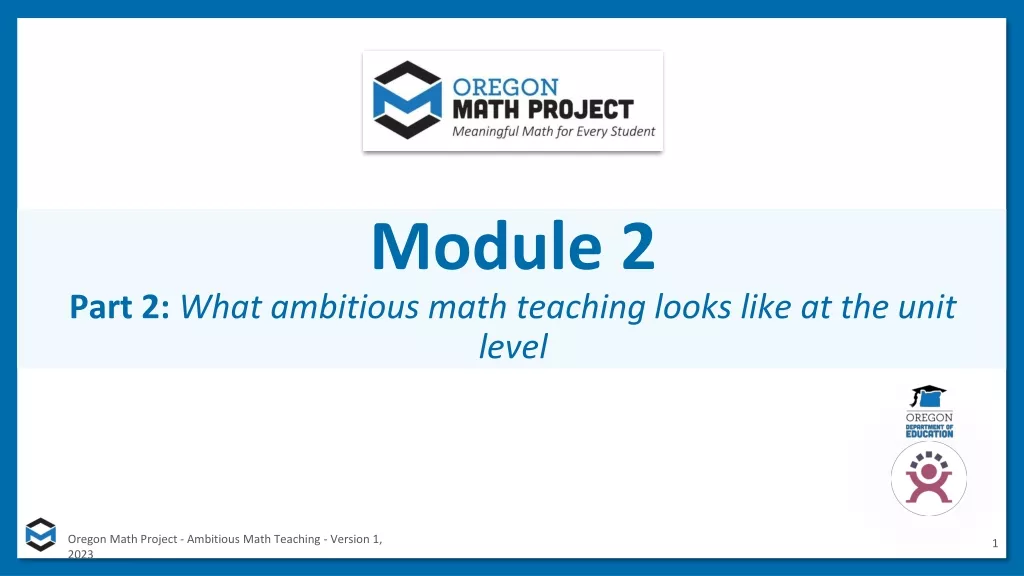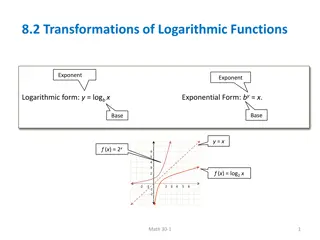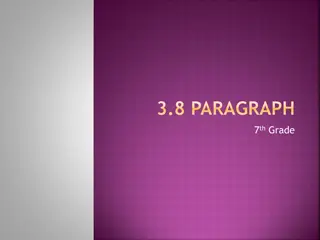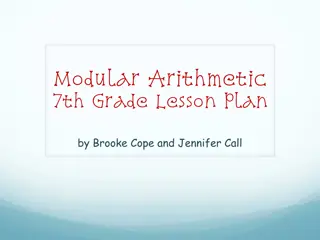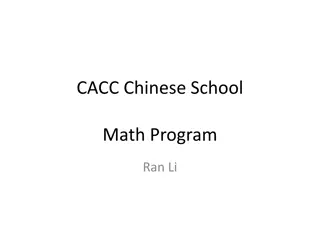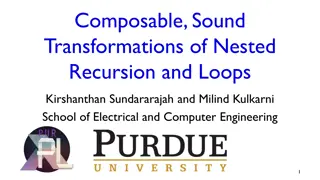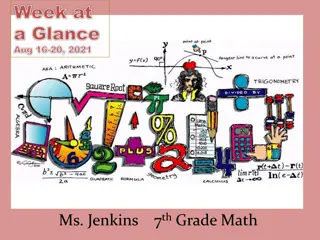
Understanding Geometric Transformations for Effective Learning
Explore the fundamentals of geometric transformations including translations, reflections, rotations, and dilations. Learn how each type of transformation operates and understand their characteristics to enhance your knowledge in geometry. Enhance your understanding of transformations with detailed explanations and visual examples.
Uploaded on | 1 Views
Download Presentation

Please find below an Image/Link to download the presentation.
The content on the website is provided AS IS for your information and personal use only. It may not be sold, licensed, or shared on other websites without obtaining consent from the author. If you encounter any issues during the download, it is possible that the publisher has removed the file from their server.
You are allowed to download the files provided on this website for personal or commercial use, subject to the condition that they are used lawfully. All files are the property of their respective owners.
The content on the website is provided AS IS for your information and personal use only. It may not be sold, licensed, or shared on other websites without obtaining consent from the author.
E N D
Presentation Transcript
TOPIC 14 Transformations and Similarities
A transformation is an operation that maps an original geometric figure, the preimage, onto a new figure called the image. There are several types of transformations: translations, reflections, rotations, and dilations. 8.6.1 TRANSLATIONS A translation slides a figure from one position to another without turning it. When translating a figure, every point of th preimage is moved the same distance and in the same direction. The image and the preimage are congruent (same shape and same size).
When a figure is translated, each point is moved the same distance and in the same direction. The translated figure is congruent to the original figure and has the same orientation.
8.6.2 REFLECTIONS A reflection is a mirror image of the original figure. It is the result of a transformation of a figure over a line called the line of reflection. In a reflection, each point of the preimage and its image are the same distance from the line of reflection. In a reflection, the image is congruent to the preimage.
8.6.2 REFLECTIONS, CONTINUED. The line of reflection can be the x- axis(reflection over the x-axis). To reflect over the x-axis multiply the y- coordinates by -1. The line of reflection can be the y-axis (reflection over the y-axis). To reflect over the x-axis multiply the x- coordinates by -1.
8.6.3 ROTATIONS A rotation is a transformation in which a figure is rotated, or turned, about a fixed point. The center of rotation is the fixed point. A rotation does not change the size or shape of the figure. So, the preimage and the image are congruent.
8.6.4 DILATIONS A dilation is a transformation that enlarges or reduces a figure by a scale factor relative to a center point. That point is called the center of dilation. The preimage and image are the same shape but not the same size since the figure is enlarged or reduced by a scale factor. (similar figures)
8.7.1 CONGRUENCE AND TRANSFORMATIONS You can prove two figures are congruent if one is the result of a translation, reflection, or rotation of the other.
8.7.3 SIMILARITY AND TRANSFORMATIONS Two figures are similar if the second can be obtained from the first by a sequence of transformations and dilations.
8.7.5 SIMILAR TRIANGLES & INDIRECT MEASUREMENT Indirect measurement allows you to use properties of similar polygons to find distances or lengths that are difficult to measure directly.
8.7.6 SLOPE AND SIMILAR TRIANGLES The slope of a line is the ratio of the rise to the run. You can use properties of similar triangles to show the ratios of the rise to the run for each right triangle are equal.

